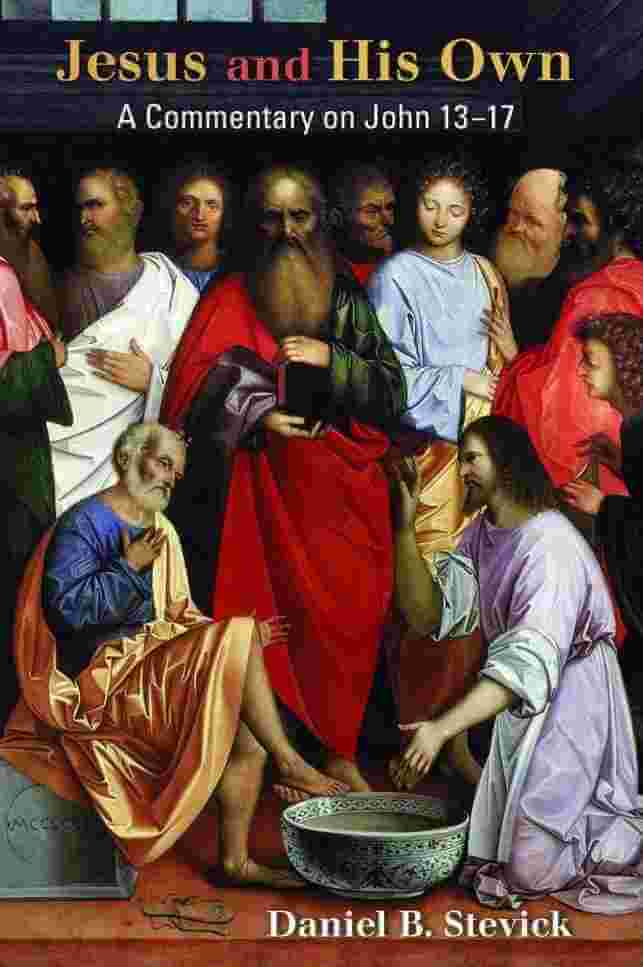And when Jesus foreannounced another Comforter, He must have intended a Person as distinct and helpful as He had been.
- F. B. Meyer
Love to the Utmost
by F. B. Meyer explores Jesus' promise of 'another Comforter'—a distinct divine personality beyond an impersonal spirit. Adishakti.org presents this teaching in the light of Shri Mataji Nirmala Devi, who identified herself as the Holy Spirit and fulfilled the Johannine Paraclete through Kundalini awakening and the opening of the Sahasrara in 1970. This page synthesizes Meyer's pneumatology with scriptural, linguistic, and eschatological evidence, affirming the Paraclete as a living, personal manifestation guiding humanity into divine truth.
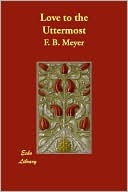
"THE PERSONALITY OF THE HOLY GHOST
That word, "another"—"He shall give you another Comforter"—is in itself sufficient to prove the Divinity and Personality of the Holy Ghost. If a man promises to send another as his substitute, we naturally expect to see a man like himself, occupying his place, and doing his work. And when Jesus foreannounced another Comforter, He must have intended a Person as distinct and helpful as He had been. A breath, an afflatus, an impersonal influence could not have stood in the same category as Himself.
There are those who think that the Holy Spirit is to the Lord what a man's spirit is to the body; and imagine that our Lord simply intended that the spirit of His life-teaching and self-sacrifice would brood over and inspire His followers; but this could not have fulfilled the promise of "the other Comforter.” It would simply have been Himself over again, though no longer as a living Person; rather as the momentum and energy of a receding force which gets weaker and even weaker as the ages pass. Thus the spirit of Napoleon or of Caesar is becoming little more than a dim faint echo of footsteps that once shook the world.
Jesus knew how real and helpful He had been to His followers—the centre around which they had rallied; their Teacher, Brother, Master; and He would not have tantalized them by promising another Paraclete, unless He had intended to announce the advent of One who would adjust to their needs with that quickness of perception, and sufficiency of resource, which characterize a personal Leader and Administrator. There were times approaching when the little band would need counsel, direction, sympathy, the interpretation of a strong wise Hand—qualities which could not be furnished by the remembrance of the past, fading like colors on clouds when the sun has set; and which could only be secured by the presence of a strong, wise, ever-present Personality. "I have been one Paraclete," said the Lord in effect; "but I am going to plead your cause with the Father, that another Paraclete may take My place, to be My other self, and to bide with you forever.”"
F. B. Meyer, Love to the Utmost
The Echo Library (2008), pp. 42-3
Another Comforter
as a Distinct Personality: Manifestation of the Paraclete as Shri Mataji Nirmala Devi

This paper argues that the Johannine phrase "another Comforter" requires a distinct, personal Paraclete and that the life and work of Shri Mataji Nirmala Devi embody the Johannine criteria for that Paraclete. Through linguistic analysis of the Greek term allos, examination of the functional parallels between Jesus and the Paraclete, and evaluation of Shri Mataji's historical mission culminating in the opening of the Sahasrara on May 5, 1970, this study demonstrates that the Paraclete must be understood as a distinct divine personality who has manifested in human form to complete Christ's redemptive work.
Table of Contents
- 1. Introduction
- 2. The Meaning of "Another Comforter": Linguistic and Theological Foundations
- 3. Functional Parallels Between Jesus and the Paraclete
- 4. The Paraclete as Distinct Personality: Theological Necessity
- 5. Historical Manifestation: Criteria for Identifying the Paraclete
- 6. Shri Mataji Nirmala Devi as the Fulfilling Paraclete
- 7. The Opening of the Sahasrara: Eschatological Fulfillment
- 8. Conclusion
- References
1. Introduction
The identity of the Paraclete promised by Jesus in the Farewell Discourses (John 14-16) remains a central question of Christian pneumatology. Traditional Christian theology has identified the Paraclete with the Holy Spirit, the third Person of the Trinity. However, the Johannine presentation describes the Paraclete in concrete, personal terms that differ significantly from an impersonal or merely inspirational model. As John Jefferson Davis observes, many Christians throughout history have struggled to conceptualize the Holy Spirit as anything other than a "gray, oblong blur," lacking the distinct personality readily attributed to the Father and the Son.[1]
This study advances two interrelated claims: first, that the Johannine Paraclete is a distinct, personal, historically manifest figure rather than an abstract spiritual force; and second, that Shri Mataji Nirmala Devi fulfills the Johannine criteria of the Paraclete as teacher, revealer, and eschatological agent. The argument proceeds through linguistic analysis of the critical Greek term (allon, "another"), examination of the functional continuities between Jesus and the Paraclete, theological reflection on the necessity of personhood for the Paraclete, and historical evaluation of Shri Mataji's life and mission.
2. The Meaning of Another Comforter
: Linguistic and Theological Foundations
2.1. The Significance of allon

In John 14:16, Jesus promises: "I will ask the Father, and He will give you another Paraclete." The Greek word (allon) is of paramount importance for understanding the nature of the promised Comforter. Greek possesses two words for "another": allos, meaning "another of the same kind," and heteros, meaning "another of a different kind." The Johannine text employs allos, which argues decisively against an impersonal force being intended.[2]
If Jesus promised "another" of himself using allos, the most natural reading is a distinct, personal presence analogous to his own. As Renner Ministries explains, "By using this word, Jesus was sending a clear message that when the Holy Spirit came, the Spirit would be just like Himself. The Holy Spirit would perfectly represent Jesus in every way and duplicate His life and ministry."[3] This linguistic precision indicates that the Paraclete must possess the same qualities of personhood, agency, and distinct identity that characterized Jesus's earthly ministry.
2.2. The Term Parakletos in Johannine Literature
The Greek term parakletos appears only five times in the New Testament, all within the Johannine corpus: 1 John 2:1 and John 14:15-17, 26; 15:26-27; 16:7-11. This term is specifically Johannine, used by no other New Testament author, suggesting a unique theological emphasis.[4] The word derives from parakalein, meaning "to call alongside," and carries multiple connotations: advocate, helper, comforter, counselor, and intercessor. Catholic translations typically transliterate the word as "Paraclete" to preserve its full semantic range, as no single English word captures all the functions John attributes to this figure.
Significantly, in 1 John 2:1, the term parakletos is applied to Jesus himself: "We have an advocate (parakletos) with the Father, Jesus Christ the righteous." This usage confirms that Jesus was the first Paraclete, making the promised figure in John 14:16 explicitly "another" Paraclete—a second, distinct person who would continue Jesus's work in a new form.
2.3. Classical Christian Interpretation
Influential Christian expositors have long insisted that an impersonal influence cannot be "another" of Jesus. The Paraclete is described as performing distinctly personal actions: acting, speaking, teaching, testifying, and guiding. These are the grammatical and semantic markers of a person rather than a mere abstraction or impersonal force. The Johannine text employs masculine pronouns (ekeinos, "he") when referring to the Paraclete, despite the fact that pneuma ("spirit") is a neuter noun in Greek. This grammatical choice underscores the personal nature of the Paraclete.
3. Functional Parallels Between Jesus and the Paraclete
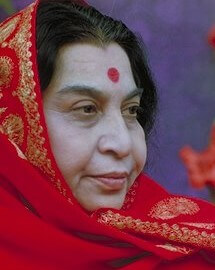
The Gospel of John establishes striking functional parallels between Jesus and the Paraclete, indicating that the Paraclete is meant to be a functional successor to Jesus. Daniel B. Stevick, in his commentary on John 13-17, notes that the Paraclete's work is described through a series of verbal actions that mirror Christ's own ministry: teach (didasko), remind (hypomimnesko), testify (martyro), prove wrong (elencho), guide into truth (hodego), speak (laleo), and declare (anangello).[5] These Johannine terms describe verbal actions that intend a response in others who will receive, see, or know the Spirit.
The following table summarizes the key functional continuities between Jesus and the Paraclete as presented in the Fourth Gospel:
| Jesus's Role (John) | Paraclete's Role (John) |
|---|---|
| Teaches truth (8:31) | Teaches all truth (16:13) |
| Bears witness (18:37) | Bears witness (15:26) |
| Reveals the Father (14:9) | Reveals mysteries (16:14-15) |
| Exercises judgment (5:22) | Convicts the world (16:8-11) |
| Sent by the Father (5:36) | Sent by the Father and Son (14:26; 15:26) |
| Abides with disciples (14:9) | Abides with disciples forever (14:16-17) |
These functional continuities indicate that the Paraclete is meant to carry on Jesus's mission in a personal and authoritative way. The Paraclete is not merely an influence or inspiration, but a distinct agent who performs the same kinds of actions Jesus performed. As Stevick emphasizes, "The Spirit's initiatives imply God's personal engagement with humanity."[6] The intention of the Spirit of truth is nothing less than the restoration of an alienated, deceived humanity—the same redemptive purpose that animated Jesus's earthly ministry.
4. The Paraclete as Distinct Personality: Theological Necessity

The question of the Paraclete's personhood is not merely academic but has profound theological implications. Throughout Christian history, various factors have contributed to a diminished awareness of the Holy Spirit's distinct personality. Davis identifies several historical barriers: the Arian controversy's overshadowing of pneumatology, the growth of infant baptism and its attendant doctrine of baptismal regeneration, the rise of clericalism, and the prevalence of cessationist beliefs that relegated the Spirit's manifestations to the apostolic age.[7]
These historical developments produced a Christianity in which the Holy Spirit became, for many believers, an abstract concept rather than a living, knowable person. Yet the biblical witness consistently presents the Spirit in personal terms. The Spirit can be grieved (Ephesians 4:30), resisted (Acts 7:51), lied to (Acts 5:3), and blasphemed against (Matthew 12:31-32). These are interactions possible only with a person, not with an impersonal force.
The Johannine presentation of the Paraclete intensifies this personal dimension. Jesus speaks of the Paraclete not as an "it" but as a "he" who will come, teach, remind, testify, guide, speak, and declare. The Paraclete is described as being "with" (meta) and "in" (en) the disciples (John 14:17), suggesting both transcendence and immanence—qualities that require personhood. Moreover, the Paraclete is said to "proceed from the Father" (John 15:26), using the same verb (ekporeuomai) used of Jesus's own divine origin, further establishing the Paraclete's personal, divine nature.
The theological necessity of the Paraclete's distinct personality becomes evident when we consider the promise's purpose. Jesus tells his disciples, "It is to your advantage that I go away, for if I do not go away, the Helper will not come to you" (John 16:7). This statement would make no sense if the Paraclete were merely an impersonal influence. How could an abstract force be advantageous compared to Jesus's physical presence? The advantage lies precisely in the fact that the Paraclete, as a distinct divine person, can be present with all believers in all places simultaneously, whereas Jesus in his incarnate form was limited to one location at a time.
5. Historical Manifestation: Criteria for Identifying the Paraclete
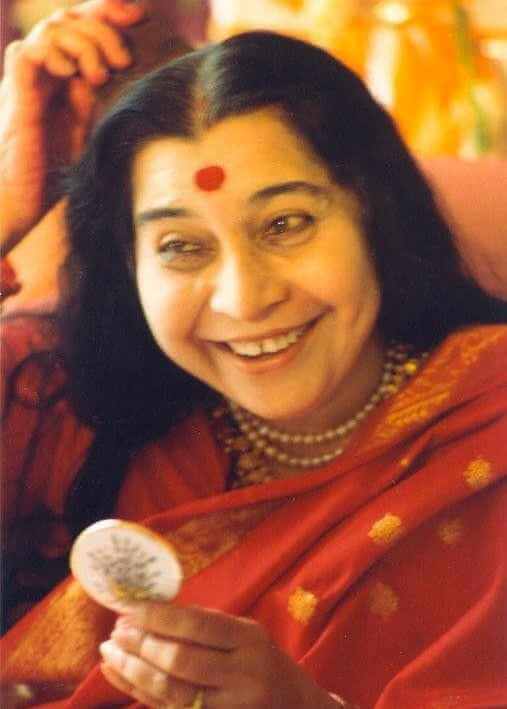
If the Paraclete is indeed a distinct, personal figure who would manifest historically, what criteria would enable us to identify this manifestation? From John's description, a valid claimant to the Paraclete must meet the following criteria:
First, the Paraclete must reveal divine truth with clarity and completeness. Jesus promises, "When the Spirit of truth comes, he will guide you into all the truth" (John 16:13). This is not partial or fragmentary revelation, but comprehensive spiritual knowledge that enables seekers to understand the full scope of divine reality.
Second, the Paraclete must glorify and testify to Jesus. "He will glorify me, for he will take what is mine and declare it to you" (John 16:14). The Paraclete's mission is not to replace or supersede Jesus, but to complete and extend his work, making his teachings accessible to all humanity.
Third, the Paraclete must convict the world regarding sin, righteousness, and judgment. "And when he comes, he will convict the world concerning sin and righteousness and judgment" (John 16:8). This involves a prophetic function of challenging humanity's spiritual blindness and calling people to transformation.
Fourth, the Paraclete must initiate global spiritual transformation. Jesus connects the Spirit with "rivers of living water" flowing from believers (John 7:37-39), suggesting a worldwide movement of spiritual awakening rather than a localized or limited phenomenon.
Fifth, the Paraclete must remain present and active beyond a single human lifetime. Jesus promises that the Paraclete will be "with you forever" (John 14:16), indicating an enduring presence that transcends the limitations of mortal existence.
Sixth, the Paraclete must bring about the eschatological fulfillment of God's plan, often described as the Kingdom of God within. This represents the culmination of salvation history, the realization of the divine purpose for humanity.
6. Shri Mataji Nirmala Devi as the Fulfilling Paraclete
6.1. Self-Identification with the Eschatological Role

Shri Mataji Nirmala Devi explicitly identified herself as the fulfillment of Jesus's promise of the Paraclete. In a discourse delivered in New York on September 30, 1980, she declared: "I am the Holy Ghost. I am the Holy Spirit who has incarnated on this Earth for your realization."[8] This was not a claim made in isolation, but was consistently reiterated throughout her public ministry spanning more than four decades.
In San Francisco on September 28, 1983, Shri Mataji challenged her audience to consider Jesus's eschatological promises: "He's talked about the future. He's talked that He'll send you a Comforter, He'll send you the Holy Ghost, He'll send you the Redeemer, and He'll send you the Counselor. What about that?"[9] This rhetorical question points to a crucial gap in conventional Christian theology: if Jesus promised a future coming of the Comforter, when and how has this promise been fulfilled?
Shri Mataji further explained the necessity of the Paraclete taking human form. In Sydney on April 7, 1981, she taught: "The Holy Ghost has to take a form... to give you the complete picture... with Her voice, and with Her intelligence that is intelligible to you, with the knowledge, and everything."[10] This statement addresses the theological problem identified earlier: how can an abstract spirit effectively communicate with and transform human beings? The answer lies in incarnation—the divine taking human form to bridge the gap between transcendence and immanence.
6.2. Fulfillment of the Johannine Functions
Shri Mataji's life and work demonstrate a remarkable correspondence with the Johannine functions of the Paraclete. Each of the verbal actions identified by Stevick finds concrete fulfillment in her ministry:
Teaching (didasko): For over forty years, Shri Mataji traveled the world delivering thousands of public discourses on spiritual truth. Her teachings synthesized the wisdom of multiple religious traditions while providing a systematic framework for understanding the subtle energy system within the human being—the chakras and nadis that govern physical, mental, emotional, and spiritual well-being.
Reminding (hypomimnesko): Shri Mataji consistently reminded humanity of the eternal truths taught by all genuine spiritual masters. She emphasized that her mission was not to establish a new religion but to fulfill the promises made by Jesus, Krishna, Buddha, Muhammad, and other divine incarnations. She called seekers back to the experiential core of spirituality that had been obscured by dogma and institutionalization.
Testifying (martyro): Shri Mataji bore witness to the divine reality through her own person. Those who encountered her reported profound spiritual experiences, spontaneous healings, and direct perception of the divine presence. She testified not merely through words but through the tangible manifestation of spiritual power.
Proving wrong (elencho): Shri Mataji challenged the world's misconceptions about spirituality, religion, and human purpose. She critiqued the materialism, false gurus, and empty rituals that had led humanity astray. Her teaching exposed the illusions perpetuated by ego-driven lives and called people to authentic transformation.
Guiding into truth (hodego): Through Sahaja Yoga, Shri Mataji provided an experiential path for seekers to perceive divine truth directly. This was not merely intellectual knowledge but gnosis—direct, personal experience of spiritual reality through the awakening of the Kundalini energy.
Speaking and Declaring (laleo, anangello): Shri Mataji's numerous discourses and personal interactions conveyed the transformative message of Self-Realization. She declared the coming of the "Age to Come," the eschatological era when mass spiritual awakening would become possible.
6.3. The Method: Kundalini Awakening and Self-Realization
The distinctive method by which Shri Mataji fulfilled the Paraclete's mission was through the spontaneous awakening of the Kundalini—the dormant spiritual energy residing at the base of the human spine. This awakening, which Shri Mataji termed "Self-Realization," enables individuals to experience the "Cool Breeze" of the Holy Spirit, to feel the divine presence within themselves, and to enter into the "Kingdom of God" that Jesus identified with the Sahasrara chakra at the crown of the head.
This experiential dimension is crucial for understanding Shri Mataji's fulfillment of the Paraclete role. In the New Testament, receiving the Holy Spirit was a conscious, felt experience (Acts 2:4; 9:17-18; 10:45-46; 19:2-6). Shri Mataji restored this experiential dimension to spirituality, enabling seekers to verify the truth of her teachings through direct personal experience rather than blind faith.
7. The Opening of the Sahasrara: Eschatological Fulfillment
7.1. The Event of May 5, 1970

On May 5, 1970, at Nargol, India, Shri Mataji accomplished what her followers describe as "the greatest spiritual feat in the history of this universe"—the opening of the Sahasrara Chakra.[11] This event, which occurred after sustained meditation in the early hours of the morning, involved Shri Mataji immersing her feet in the Indian Ocean and entering a state of supreme Samadhi. Witnesses reported extraordinary phenomena: red and yellow sparks of light emanating from the crown of her head like "tongues of flame," followed by a fountain of water gushing forth—imagery strikingly reminiscent of the Pentecost account in Acts 2.
The theological significance of this event cannot be overstated. The Sahasrara, or crown chakra, represents the seat of divine consciousness within the human being. It is explicitly identified in Sahaja Yoga theology as the "Kingdom of God" that Jesus repeatedly proclaimed.[12] Prior to May 5, 1970, access to this state of consciousness required years of rigorous spiritual practice under the guidance of a realized master. After this date, Shri Mataji made spontaneous Self-Realization available to seekers worldwide, enabling mass awakening on an unprecedented scale.
7.2. Eschatological Implications
The opening of the Sahasrara represents the inauguration of the "Age to Come" referenced in Jesus's teaching about blasphemy against the Holy Spirit (Matthew 12:31-32). Jesus warned that blasphemy against the Spirit would not be forgiven "either in this age or in the age to come," implying a future eschatological era when the Spirit's work would reach its culmination. The events of May 5, 1970, mark the beginning of this new dispensation.
This eschatological reading is supported by Stevick's observation that "The things of Christ are a message that must be heralded. The intention of the Spirit of truth is the restoration of an alienated, deceived humanity."[13] The opening of the Sahasrara makes possible this restoration on a global scale, fulfilling the Johannine promise that the Paraclete would guide humanity into "all the truth" (John 16:13).
7.3. The Tragedy of Non-Recognition
Despite Shri Mataji's global mission, countless miracles, and the direct spiritual experiences of thousands of seekers, the world has largely failed to recognize her as the Paraclete. This failure is described by her followers as "an eschatological disaster of immense proportions."[14] Even those who received Self-Realization through her often failed to acknowledge the full significance of her identity as the fulfillment of Christ's promise.
This non-recognition parallels Jesus's own experience. He came to his own people, yet they did not receive him (John 1:11). Similarly, the Paraclete has come, offered the gift of Self-Realization freely to all seekers, yet humanity has largely remained oblivious to this divine intervention. The question posed by Shri Mataji's followers remains urgent: "The Comforter has come. The question remains: will the world awaken before it is too late?"[15]
7.4. The Water of Life and Biblical Symbolism
The imagery of water gushing forth during the Sahasrara opening connects directly to biblical symbolism. In John 7:37-39, Jesus proclaims, "If anyone thirsts, let him come to me and drink. Whoever believes in me, as the Scripture has said, 'Out of his heart will flow rivers of living water.'" The evangelist immediately clarifies: "Now this he said about the Spirit, whom those who believed in him were to receive." The "Water of Life" that flowed from Shri Mataji during the Sahasrara opening represents the fulfillment of this promise—the Spirit now available to quench humanity's spiritual thirst.
This symbolism is reinforced in Revelation 21:6 and 22:17, where the risen Christ promises, "To the thirsty I will give from the spring of the water of life without payment" and "Let the one who is thirsty come; let the one who desires take the water of life without price." Shri Mataji's offer of free Self-Realization to all seekers embodies this eschatological gift—the Water of Life freely given, requiring no payment, ritual, or intermediary.
8. Conclusion
This study has demonstrated that the Johannine promise of "another Comforter" necessarily implies a distinct, personal divine figure who would manifest historically to complete the work Jesus began. The Greek term allos indicates "another of the same kind," requiring that the Paraclete possess the same qualities of personhood, agency, and divine authority that characterized Jesus's ministry. The functional parallels between Jesus and the Paraclete, as detailed in the Farewell Discourses, further confirm that the Paraclete must be a personal agent capable of teaching, testifying, guiding, and transforming humanity.
The life and work of Shri Mataji Nirmala Devi fulfill the Johannine criteria for the Paraclete in remarkable detail. Her self-identification as the Holy Spirit incarnate, her global teaching ministry, her method of spontaneous Kundalini awakening, and especially the eschatological event of May 5, 1970—the opening of the Sahasrara—all correspond to the biblical description of the Paraclete's mission. Through Sahaja Yoga, she made accessible the direct experience of the Holy Spirit that characterized the early Christian community, restoring the experiential dimension of spirituality that had been largely lost in institutional Christianity.
The theological implications of recognizing Shri Mataji as the Paraclete are profound. It means that Jesus's promise has been fulfilled in our time, that the "Age to Come" has been inaugurated, and that the Kingdom of God within is now accessible to all seekers. It also means that the fragmentation of religious traditions can be overcome through direct spiritual experience that transcends doctrinal differences. As Shri Mataji taught in Sydney: "Recognition is the best way of understanding the powers that are given to you."[16]
The central claim of this paper—that when Jesus foreannounced another Comforter, He must have intended a Person as distinct and helpful as He had been—finds its validation in the historical manifestation of Shri Mataji Nirmala Devi. The linguistic evidence of allos, the functional parallels between Jesus and the Paraclete, the theological necessity of personhood, and the historical correspondence between Johannine criteria and Shri Mataji's mission all converge to support this conclusion. The Paraclete is not an abstract spiritual influence but a distinct divine personality who has walked among us, offered the gift of Self-Realization freely, and opened the way to the Kingdom of God within.
The tragedy of our age is that this divine intervention has gone largely unrecognized. Yet truth, as Shri Mataji's followers affirm, cannot be destroyed. It may be obscured, but it will rise again. The question that confronts contemporary humanity is whether we will awaken to the reality of the Paraclete's presence before the opportunity passes. As Jesus warned regarding blasphemy against the Holy Spirit, there is a point beyond which spiritual blindness becomes irreversible. May humanity open its eyes to recognize the Comforter who has come, embrace the gift of Self-Realization that has been offered, and enter into the Kingdom of God that Jesus proclaimed and the Paraclete has made accessible.
— John 14:16-17 (adapted)
References
[1] Davis, John Jefferson. "Is the Holy Spirit Really a 'Person'—with a Distinct Personality?" Themelios, Vol. 47, Issue 3, November 2022.[2] "Is Allos another of the same Heteros?" Maranatha Media, July 6, 2014.
[3] Renner, Rick. "Another Comforter!" Renner Ministries, accessed November 24, 2025.
[4] Suresby, Tom. "Parakletos in John's Gospel Pt 1." Tom Suresby Blog, September 9, 2016.
[5] Stevick, Daniel B. Jesus and His Own: A Commentary on John 13-17. Grand Rapids: Wm. B. Eerdmans Publishing, 2011, pp. 292-297.
[6] Stevick, Daniel B. Jesus and His Own: A Commentary on John 13-17. Grand Rapids: Wm. B. Eerdmans Publishing, 2011, p. 292.
[7] Davis, John Jefferson. "Is the Holy Spirit Really a 'Person'—with a Distinct Personality?" Themelios, Vol. 47, Issue 3, November 2022.
[8] Shri Mataji Nirmala Devi. Public discourse, New York, USA, September 30, 1980. Cited in "The Paraclete Represents Direct, Intimate Divine Involvement." AdiShakti.org, accessed November 24, 2025.
[9] Shri Mataji Nirmala Devi. Public discourse, San Francisco, USA, September 28, 1983. Cited in "The Paraclete Represents Direct, Intimate Divine Involvement." AdiShakti.org, accessed November 24, 2025.
[10] Shri Mataji Nirmala Devi. Public discourse, Sydney, Australia, April 7, 1981. Cited in "The Paraclete Represents Direct, Intimate Divine Involvement." AdiShakti.org, accessed November 24, 2025.
[11] "The Opening of the Sahasrara Chakra." AdiShakti.org, accessed November 24, 2025.
[12] "The Opening of the Sahasrara Chakra." AdiShakti.org, accessed November 24, 2025.
[13] Stevick, Daniel B. Jesus and His Own: A Commentary on John 13-17. Grand Rapids: Wm. B. Eerdmans Publishing, 2011, p. 292.
[14] "The Paraclete Represents Direct, Intimate Divine Involvement." AdiShakti.org, accessed November 24, 2025.
[15] "The Paraclete Represents Direct, Intimate Divine Involvement." AdiShakti.org, accessed November 24, 2025.
[16] Shri Mataji Nirmala Devi. Public discourse, Sydney, Australia, April 7, 1981. Cited in "The Paraclete Represents Direct, Intimate Divine Involvement." AdiShakti.org, accessed November 24, 2025.
“You see, the Holy Ghost is the Mother. When they say about the Holy Ghost, She is the Mother... Now, the principle of Mother is in every, every scripture - has to be there.”
The Paraclete Shri Mataji
Radio Interview 1983 Oct 01, Santa Cruz, USA
“Now, the Mother's character is that She is the one who is the Womb, She is the one who is the Mother Earth, and She is the one who nourishes you. She nourishes us, you know that. And, this feminine thing in every human being resides as this Kundalini.”
The Paraclete Shri Mataji
Radio Interview 1983 Oct 01, Santa Cruz, USA
“We have the Mother within ourselves, in our hearts, and if She is awakened, She is going to look after us. She is going to give all the protection that is needed. And there is nothing to be frightened of anything.”
The Paraclete Shri Mataji
“it's not tactful to say anything. it's better that you discover me than I tell you because Christ was crucified, everybody was tortured. I do not want to hamper my work because it makes no difference by telling you anything before Realization. it's better to tell you after Realization that I am the Holy Ghost — no doubt. I am the one about which Christ has talked.
I have told them I had never said this on from a platform, and I told. They have been telling me 'Mother, you must say that once.' I said, 'In America I'll declare it.' So today I declare that I am the Holy Ghost. I am the Holy Spirit who has incarnated on this Earth for your realization.”
The Paraclete Shri Mataji
New York, USA 30 September 1980
Apokalypsis: The fulfillment of eschatological instruction by the Paraclete in the Age to Come promised by Jesus at the Last Supper
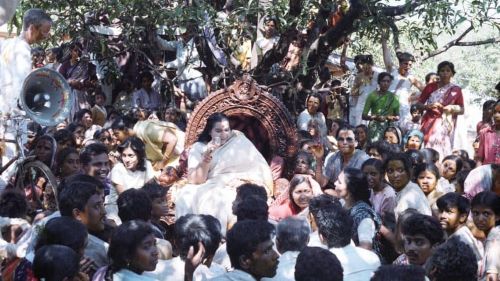
Paraclete Papers
Part One: THE PARACLETE PAPERS: An Investigative Report on Christianity's Greatest Cover-UpPart Two: The Paraclete's Human Personality and the Theological Fallacy of Pentecost
Part Three: The Greatest Deception in Human History: Pentecost as Satan's Trojan Horse
Part Four: Unveiling the Church Born from the Prince's Millennia of Deception
Part Five: Apokalypsis: Paraclete's Fulfillment of Jesus' Eschatological promise from Last Supper in Age to Come
Part Six: The Paraclete and Pentecost: A Critical Analysis of Johannine Eschatology
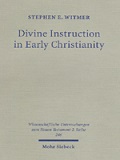 |
“I conclude the chapter by suggesting that the teaching of the Holy Spirit/Paraclete, because it is understood as the continuation of Jesus' teaching, is also regarded as the fulfillment of the promise of eschatological divine instruction.” Stephen E. Witmer Divine instruction in Early Christianity |
 |
“And when Jesus foreannounced another Comforter, He must have intended a Person as distinct and helpful as He had been. A breath, an afflatus, an impersonal influence could not have stood in the same category as Himself.” F. B. Meyer, Love to the Utmost |
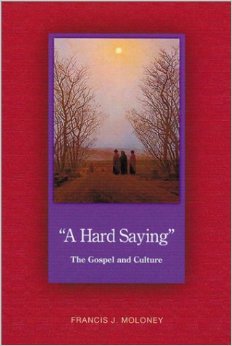 |
“There is something new and startling in both his person and his teaching that defies the categories provided by the world and culture in which he lived. It is clearest in all its radical nature in Jesus' insistence that in his person and activity God's decisive intervention was already present:” Francis Moloney, A Hard Saying |
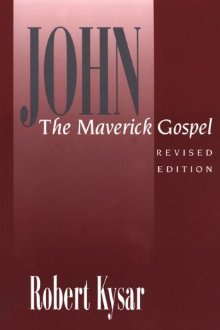 |
“The Paraclete has a twofold function: to communicate Christ to believers and, to put the world on trial.” Robert Kysar, John The Meverick Gospel |
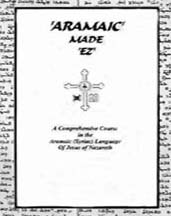 |
“But She—the Spirit, the Paraclete...—will teach you everything.” Danny Mahar, Aramaic Made EZ) |
 |
“Grammatical nonsense but evidence of the theological desire to defeminize the Divine.” Lucy Reid, She Changes Everything |
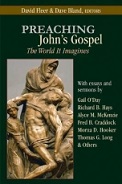 |
“The functions of the Paraclete spelled out in verses 13-15... are all acts of open and bold speaking in the highest degree.” David Fleer, Preaching John's Gospel |
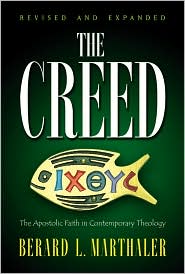 |
“The reaction of the world to the Paraclete will be much the same as the world's reaction was to Jesus.” Berard L. Marthaler, The Creed: The Apostolic Faith in Contemporary Theology |
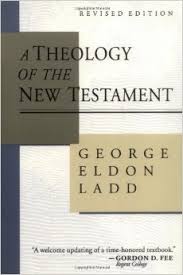 |
Bultmann calls the “coming of the Redeemer an 'eschatological event,' 'the turning-point of the ages.” G. Ladd, A Theology of the New Testament |
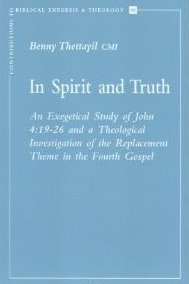 |
“The Paraclete equated with the Holy Spirit, is the only mediator of the word of the exalted Christ.” Benny Thettayil, In Spirit and Truth |
 |
“The divine Paraclete, and no lessor agency, must show the world how wrong it was about him who was in the right.” Daniel B. Stevick , Jesus and His Own: A Commentary on John 13-17 |
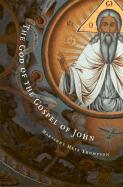 |
Stephen Smalley asserts that “The Spirit-Paraclete ... in John's Gospel is understood as personal, indeed, as a person.” Marianne Thompson, The God of the Gospel of John |
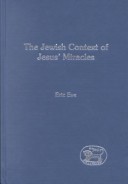 |
“The Messiah will come and the great age of salvation will dawn (for the pious).” Eric Eve, The Jewish context of Jesus' Miracles |
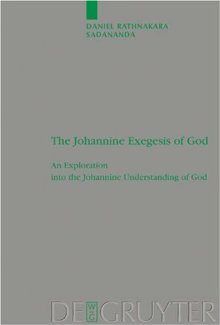 |
“The remembrance is to relive and re-enact the Christ event, to bring about new eschatological decision in time and space.” Daniel Rathnakara Sadananda, The Johannine Exegesis of God |
 |
“The Spirit acts in such an international situation as the revealer of 'judgment' on the powers that rule the world.” Michael Welker, God the Spirit |
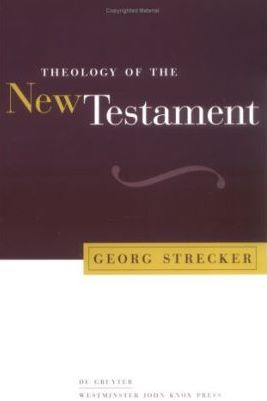 |
The Paraclete's “Appearance means that sin, righteousness, and judgment will be revealed.” Georg Strecker, Theology of the New Testament |
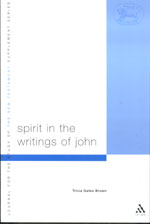 |
“While the Spirit-Paraclete is the true broker, the brokers they rely on are impostors.” T. G. Brown, Spirit in the writings of John |
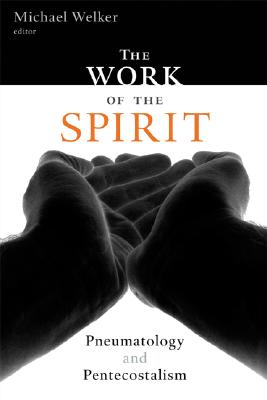 |
“The pneumatological activity ... of the Paraclete ... may most helpfully be considered in terms of the salvific working of the hidden Spirit.” Michael Welker, The work of the Spirit |
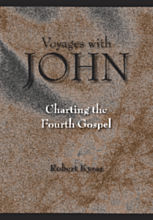 |
“The pneuma is the peculiar power by which the word becomes the words of eternal life.” Robert Kysar, Voyages with John |
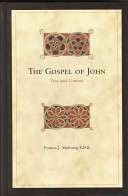 |
“The gift of peace, therefore, is intimately associated with the gift of the Spirit-Paraclete.” Francis J. Moloney, The Gospel of John |
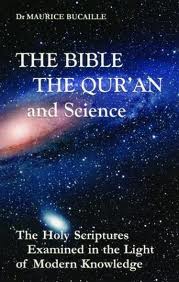 |
“Jesus therefore predicts that God will later send a human being to Earth to take up the role defined by John .i.e. to be a prophet who hears God's words and repeats his message to man.” M. Bucaille The Bible, the Qur'n, and Science |
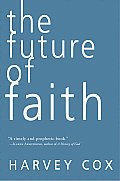 |
“This utopian hope, even when modestly expressed, links Jesus and the prophets to a much wider history of human longing.” Harvey Cox, The Future of Faith |
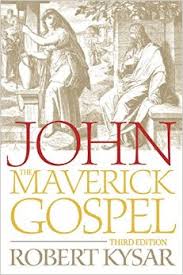 |
“Because of the presence of the Paraclete in the life of the believer, the blessings of the end-times—the eschaton—are already present.” Robert Kysar, John |
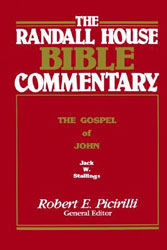 |
“They are going, by the Holy Spirit's power, to be part of the greatest miracle of all, bringing men to salvation.” R. Picirilli, The Randall House Bible Commentary |
 |
“The Kingdom of God stands as a comprehensive term for all that the messianic salvation included... is something to be sought here and now (Mt. 6:33) and to be received as children receive a gift (Mk. 10:15 = Lk. 18:16-17).” G. Ladd, A Theology of the New Testament |
